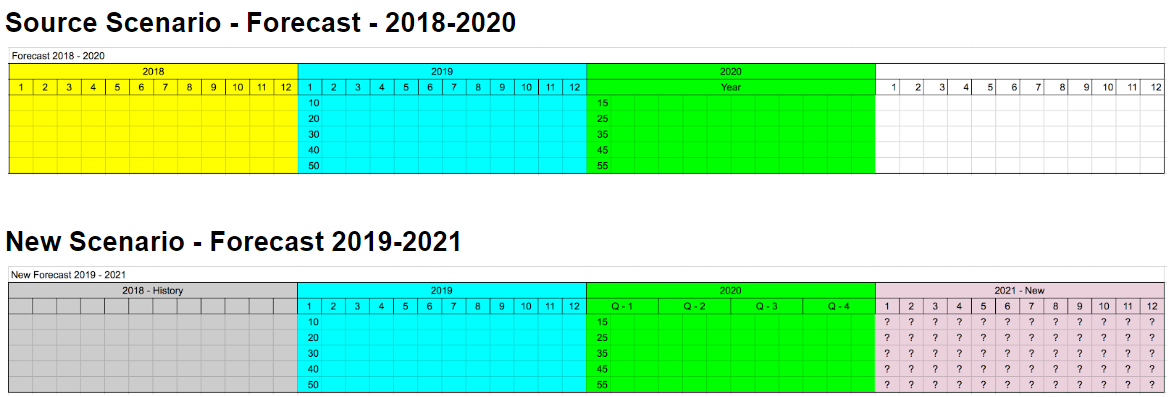- 1 Minute to read
- Print
- DarkLight
- PDF
Seeding Formulas
- 1 Minute to read
- Print
- DarkLight
- PDF
The Data Seeding logic ensures that the formulas seeded are automatically adjusted. For example, when there is a formula in the first period of 2018, that same formula will reflect in the first period of 2019.
When data is manually entered in a template and then the related scenario is seeded, the data is copied to the appropriate target scenario template. For example, if a user entered 10 dollars in the first period of 2019, the same 10 dollars reflects in the seeded target scenario in the first period of 2019. The same holds true for currency exchange rates and Workforce Planning data. This logic is shown below.

Simulation Engine must be executed on the templates seeded from the source to the target scenario so that the formulas and values are properly calculated. Optionally, you can just open and save each template and it works the same way.
Seeding of formulas can be done from any source scenario; reference or varying scenario and period selections.
Best Practices for Seeding of Formulas
Execute/schedule a Simulation Engine process after the target scenario is saved (seeded) on the Add Scenario page.
Use simple formulas in templates versus complex. An example of a complex formula is to perform a Get (i.e. Get 2017 data + 10%). An example of a simple formula is to compute the previous year same period + 10%.

